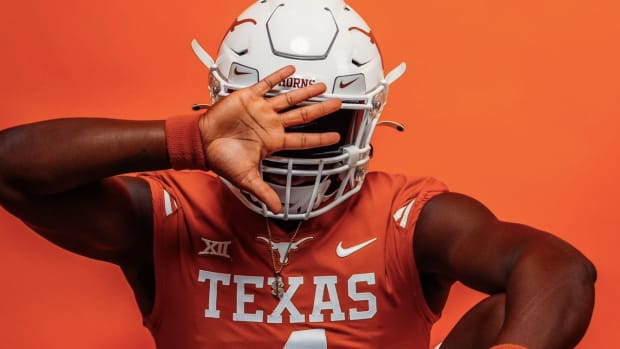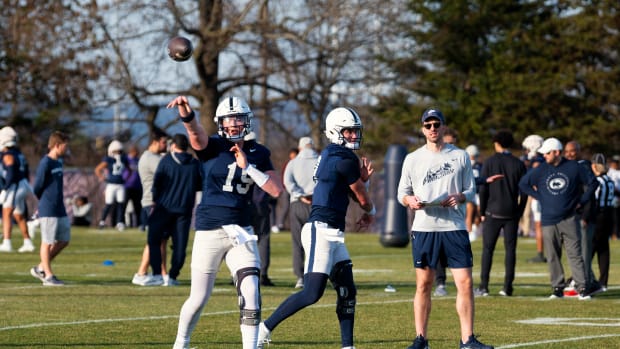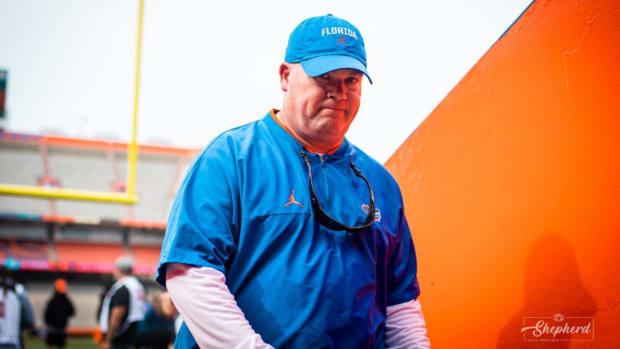How the Multi-Bye Week Schedule Might Shake Up the 2019 College Football Season
This fall, college football will enjoy its version of a leap year—except 14 weeks of football is a hell of a lot better than 29 days of February.
The 2019 calendar allows for 14 regular-season weeks before conference championship Saturday instead of the usual 13, and although that doesn’t mean extra football, it does mean extra time for the same amount of football, which everyone benefts from in the form of a second bye week. The last time college football faced a double-bye year was in 2014. It happened in 2013, too, and before that, 2008. Here’s why it happens: In the majority of years, there are 13 Saturdays from the Saturday two days before Labor Day until the Saturday after Thanksgiving. But this year, Labor Day falls just one day past its earliest possible date, and Thanksgiving falls on its latest possible date. That means one more week of football, for 14 total, for each team to play the same amount of regular-season games (12) as usual. This has been your lesson in the Gregorian calendar.
As for what that means for college football: in the grand scheme, very little. Teams will still play the same number of regular-season games, and by conference championship week and bowl season, everyone will be working off of similar levels of rest. But on a smaller scale, this quirk of scheduling does affect the season. It’s impossible to predict which schedules will turn out to be advantageous and which won’t—who knows what hot streaks might be cooled by a week off and which slumps or injuries will be met with some needed downtime—but there are some quirky schedules that result from the extra fall Saturday.
Three Power 5 teams—Arizona, Miami and Florida—get three byes because their seasons kick off in Week 0 on Aug. 24. Each sits out Week 1 in return, and they’re all lucky enough to enjoy a well-spaced slate of bye weeks after that. Arizona and Miami have one each in August, September and November, and Florida gets a Saturday off in August, October and November.
Two Big 12 teams have Week 2 byes. Both Iowa State and TCU get the second week of the season off; each opens in Week 1 against an FCS team. (Iowa State takes on UNI, and TCU gets the University of Arkansas at Pine Bluff.) In a regular season, that would be far too early for a break and make for a brutal rest of the season, but not this year. In a sense, all this does is delay the start of real football for both teams from Week 1 until Week 3, when Iowa State hosts Iowa and TCU travels to Purdue. Each should get a chance to ease into the season, and TCU’s schedule takes that to the extreme: It’s off both Sept. 7 and again on Oct. 12, meaning that when it takes the field in Week 8, it will have played just five games.
Northwestern’s two early byes might be a blessing to help break up a challenging first half. The Wildcats open at Stanford, then get a Week 2 breather before hosting UNLV and Michigan State, then travel to Wisconsin and Nebraska before their second bye arrives on Oct. 12. That midseason off week gives them valuable rest before what should be the toughest matchup of their season, at home on a Friday night against Ohio State.
Michigan also has it pretty good when it comes to byes. The Wolverines get their first weekend off in Week 3, just before their first conference game at Wisconsin. Even though the Badgers had a down year in 2018, that doesn’t mean they won’t pose a threat to Michigan this fall. The next bye comes in Week 11 on Nov. 9, in advance of this year’s meeting with Michigan State in Ann Arbor.
The Spartans themselves will be well-rested by that point, maybe even to a fault. They travel to Wisconsin on Oct. 12, then have a bye, then host Penn State, then have another free Saturday. Time will tell what playing two football games in just under a month does to MSU’s momentum.
Two ACC teams face a similar situation in October, a month during which NC State and Wake Forest each play just two games. The Wolfpack host Syracuse on Oct. 10 (a Thursday night game) and play at Boston College on Oct. 19, meaning they will suit up on exactly one October Saturday in a month bookended by byes. Meanwhile, Wake Forest faces Louisville on Oct. 12 and Florida State on Oct. 19. Both games are in Winston-Salem, meaning the Demon Deacons won’t leave Winston-Salem all month. In fact, after they return from their Sept. 28 game at Boston College, they won’t go on the road again until Nov. 9.
Nebraska is the rare Power 5 team with a front-loaded schedule and plenty of rest down the stretch. The Huskers play seven games before their first week off, on Oct. 19. Then they play Indiana and Purdue—a relatively manageable stretch—before bye No. 2 in Week 11. They round out the season with Wisconsin, Maryland and Iowa. Overall, Nebraska’s schedule provides Scott Frost and his charges a good opportunity to rebound from last year’s 4–8 campaign.
USC just gets to end a week early, taking one of its byes in Week 14 just as it did in 2017. This best-case scenario may be somewhat unlikely after a disappointing season in which the Trojans weren’t even bowl-eligible, but by not playing on the Saturday after Thanksgiving, the Trojans will miss out on one last chance to impress. If USC is actually in the playoff hunt, the week off could offer precious time to prepare for the Pac-12 title game the following weekend, but what if this late bye actually takes USC’s fate out of its own hands as other contenders make a final statement to the selection committee? No matter what anyone says about the effect of visibility on the playoff race, on a weekend when all butts tend to be on couches and eyes on college football, the Trojans will be nowhere to be found.




